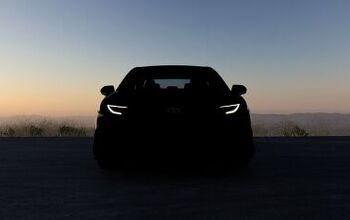You Missed Your Chance to Score Really Cheap Gas and Dream of a Less Regulated Life

California is typically painted a scorching red on Gasbuddy’s heat map, but some drivers got a break from high pump prices in Beverly Hills this morning.
You needed a classic car to make the cut, and you needed to be at the historic (Union) 76 Gas Station at Little Santa Monica Boulevard and Crescent Drive, but if you were, you took a trip back in time without having to worry about dodging the draft.
Because it’s National Collector Car Appreciation Day, vintage car insurance provider Hagerty figured it would be nice to offer owners gasoline at vintage prices. Whatever year your vehicle rolled off the lot determined the price. When was the last time an insurance company brightened your day?
Got a ’55 Chevrolet? 29 cents a gallon, please. 1970 Ford? Pry open that Costanza wallet and pay 35 cents a gallon. The gasoline wasn’t leaded, because you can’t completely escape federal regulations.
Pump prices in the Beverly Hills-Hollywood are (mostly) well above three bucks a gallon today, so it would be nice to imagine — just for a fleeting moment — that Eisenhower is still alive, drum brakes are just fine for stopping, and a limitless future of Jetsons-like convenience awaits us all.
Hell, because prices weren’t adjusted for inflation, you’d have scored a great deal even if you showed up in a 1981 LTD with that awful 255 Windsor.
Depending on who you are (cynic, misanthrope, idealist, realist), it’s easy to think of those bygone days as the pinnacle of the American Dream or an unprogressive era rife with discrimination. But at least gas was cheaper, right? Well, it was…except for that era when WKRP was on the air.
Want to know what you really paid back then, adjusted for inflation? The federal government has graced us with this chart:
[Image: U.S. Department of Energy]

More by Steph Willems
Latest Car Reviews
Read moreLatest Product Reviews
Read moreRecent Comments
- TheEndlessEnigma Of course they should unionize. US based automotive production component production and auto assembly plants with unionized memberships produce the highest quality products in the automotive sector. Just look at the high quality products produced by GM, Ford and Chrysler!
- Redapple2 Got cha. No big.
- Theflyersfan The wheel and tire combo is tragic and the "M Stripe" has to go, but overall, this one is a keeper. Provided the mileage isn't 300,000 and the service records don't read like a horror novel, this could be one of the last (almost) unmodified E34s out there that isn't rotting in a barn. I can see this ad being taken down quickly due to someone taking the chance. Recently had some good finds here. Which means Monday, we'll see a 1999 Honda Civic with falling off body mods from Pep Boys, a rusted fart can, Honda Rot with bad paint, 400,000 miles, and a biohazard interior, all for the unrealistic price of $10,000.
- Theflyersfan Expect a press report about an expansion of VW's Mexican plant any day now. I'm all for worker's rights to get the best (and fair) wages and benefits possible, but didn't VW, and for that matter many of the Asian and European carmaker plants in the south, already have as good of, if not better wages already? This can drive a wedge in those plants and this might be a case of be careful what you wish for.
- Jkross22 When I think about products that I buy that are of the highest quality or are of great value, I have no idea if they are made as a whole or in parts by unionized employees. As a customer, that's really all I care about. When I think about services I receive from unionized and non-unionized employees, it varies from C- to F levels of service. Will unionizing make the cars better or worse?



































Comments
Join the conversation
My humble proposal, meant to please the business sector, environmentalists, and federal budget hawks. Let's set a target price of, for example, $2.50/gal, before state & local taxes. When the market price of crude drops below that level, continue charging $2.50 and put that revenue, while it lasts, towards the national debt. When gas rises over $2.50/gal, subsidize it to bring it down to that level. With me so far? Great, but let's also raise the target price by a regular amount, like $.05 per year. A longterm pricing plan like this would help businesses -- even the oil business -- by making oil prices steady and predictable. It helps the environment and the renewable sector by gradually lifting the pump price at a bearable rate. And it helps the economy by providing a new revenue source dedicated for debt reduction. Please don't waste time speculating whether I'm a liberal or a conservative. I'm just trying to propose a a practical idea. Whats the matter with it?
I don't know about CA, I didn't live in SoCal until starting in '81, but in the Midwest in 1977 I remember paying in the 50 - 60 cent per gallon range for premium (Sunoco 260). Price was very important to me in those days as I was trying to keep enough premium in a thirsty (5-ish mpg) '69 L-78 SS Camaro to be able to cruise the strip on Saturday nights on a part time, after-school grocery clerk salary. For comparison, just about an hour ago here in the Midwest I filled up for $1.83 per gallon, which according to the gov't inflation calculator works out to 46 cents a gallon in 1977 money. That's pretty much right on the money for 1977 regular, pun intended.